Tour of the city center, exploring the squares and their sculptures (Eng - Esp)
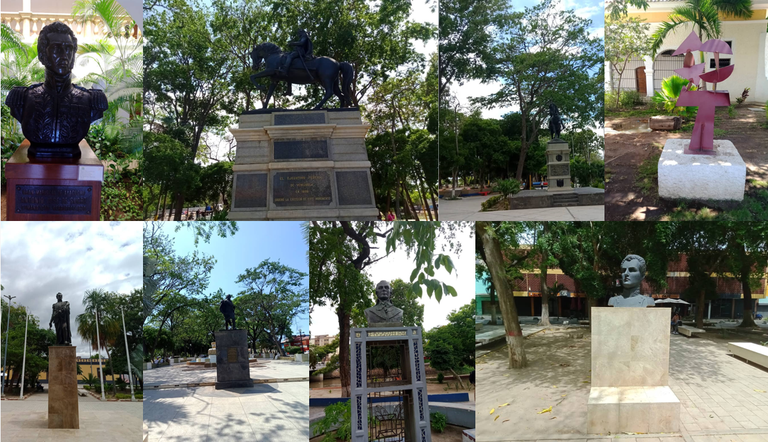
Taking advantage of my son's school holidays, we made several routes to visit the emblematic sites of the city, this time our destination was the squares and sculptures located in the center, we started at the Gran Mariscal de Ayacucho museum, which houses several sculptures, on the ground floor upon entering the museum you will see a bust of Antonio José de Sucre, which has a wooden pedestal as a base, in the back you can see the beautiful garden that adorns the statue, on the second floor, next to the Ayacucho room, there are sculptures of three national heroes who actively participated in the fight for independence.
Upon arriving at the museum we were greeted by the guide, we signed the guest book and took a tour, in which she explained the different areas that make up the museum, this tour lasts approximately one hour, upon leaving the museum we headed to Ayacucho Park (next to the museum) and sat on the benches to observe the sculpture of Antonio José de Sucre, this rests on a granite pedestal which in turn is divided into four bands, in the front you can see Sucre on the horse, then the coat of arms of Venezuela, in the next band the date of the Battle of Ayacucho and below the coat of arms of Peru, where the aforementioned battle took place.
In the back you can see the coats of arms of Ecuador, Peru and Bolivia, the sculpture is black, like the coats of arms, the pedestal rests in turn on a rectangular granite base which has around it several palm trees, ornamental plants and trees that beautify and refresh the place, on the right side, the pedestal is also divided into stripes, which combine the colors gray and beige, in them is written the date of birth of the Great Marshal, which was February 3, 1795, in the city of Cumaná and on the last side that is located on the right side and where the Marshal has his face, is the date on which the executive ordered this work to be carried out, to pay tribute to the outstanding hero for his participation in favor of the independence of Venezuela and some countries in the South that were also a colony of Spanish rule.
The pedestal in each of the stripes has a cornice that serves as decoration and division, the longest cornice is where the statue is located, the square is an important meeting point in the city and a great historical and cultural reference, as it pays tribute to the Cumanés hero who gives the state its name, residents come to the square at different times of the day, in the several that I have been it has never been alone, its strategic location makes it a busy place, it also has granite benches and walkways, from here you can also see the passage of the Manzanares River, over the Antonio Guzmán Blanco bridge.
Aprovechando las vacaciones escolares de mi hijo, hicimos varias rutas para conocer los sitios emblemáticos de la ciudad, en esta oportunidad nuestro destino fueron las plazas y esculturas ubicadas en el centro, iniciamos en el museo Gran Mariscal de Ayacucho, en el cual se encuentran varias esculturas, en la planta baja al entrar al museo verás un busto de Antonio José de Sucre, el cual tiene como base un pedestal de madera, en la parte trasera se observa el hermoso jardín que adorna la estatua, en el segundo piso, al lado del salón Ayacucho, se encuentran las esculturas de tres próceres que participaron activamente en la lucha por la independencia.
Al llegar al museo nos recibió la guía, firmamos el libro de visitas e hicimos un recorrido, en el cual ella va explicando las diferentes áreas que integran el museo, este recorrido dura aproximadamente una hora, al salir del museo nos dirigimos al parque Ayacucho (queda al lado del museo) y nos sentamos en los bancos a observar la escultura de Antonio José de Sucre, esta descansa en un pedestal de granito el cual a su vez se divide en cuatro franjas, en la parte delantera se observa a Sucre en el caballo, luego el escudo de Venezuela, en la siguiente franja la fecha de la batalla de Ayacucho y debajo el escudo de Perú, donde se realizó la batalla mencionada.
En la parte posterior se aprecian los escudos de Ecuador Perú y Bolivia, la escultura es de color negro, al igual que los escudos, el pedestal descansa a su vez en una base rectangular de granito la cual tiene alrededor varias palmeras, plantas ornamentales y árboles que embellecen y refrescan el lugar, en el lado derecho, el pedestal también se divide en franjas, las cuales combinan los colores gris y beige, en ellos está escrita la fecha de nacimiento del Gran Mariscal, que fue el 3 de febrero del año 1795, en la ciudad de Cumaná y en la última cara que se ubica al lado derecho y hacia dónde el Mariscal tiene el rostro, se encuentra la fecha en la cual el ejecutivo mandó a realizar esta obra, para rendir un homenaje al destacado prócer por su participación en pro de la independencia de Venezuela y algunos países del Sur que eran también colonia del dominio español.
El pedestal en cada una de las franjas tiene una cornisa que sirve de adorno y división, la cornisa más larga está donde se ubica la estatua, esta plaza es un importante punto de encuentro en la ciudad y una gran referencia histórica y cultural, pues rinde homenaje al prócer Cumanés que da nombre al estado, los residentes acuden a la plaza en diferentes horas del día, en las varias que he ido nunca ha estado sola, su ubicación estratégica, la convierte en un lugar concurrido, cuenta además, con bancos y caminerías de granito, desde aquí también se puede ver el paso del río Manzanares, por el puente Antonio Guzmán Blanco.

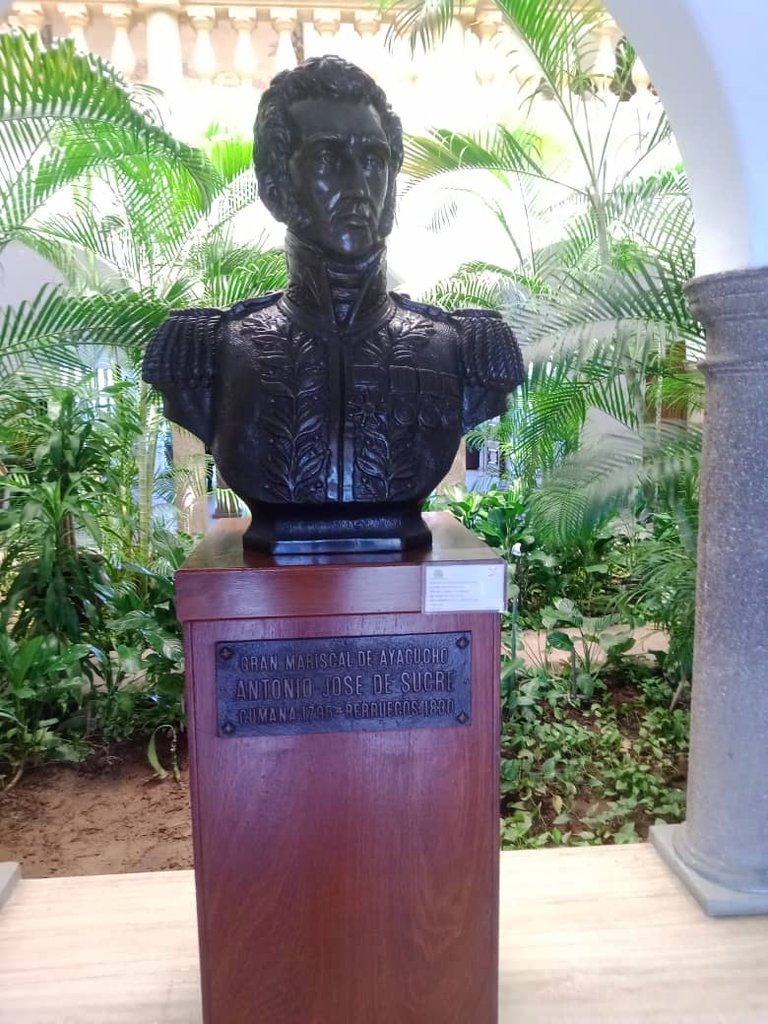
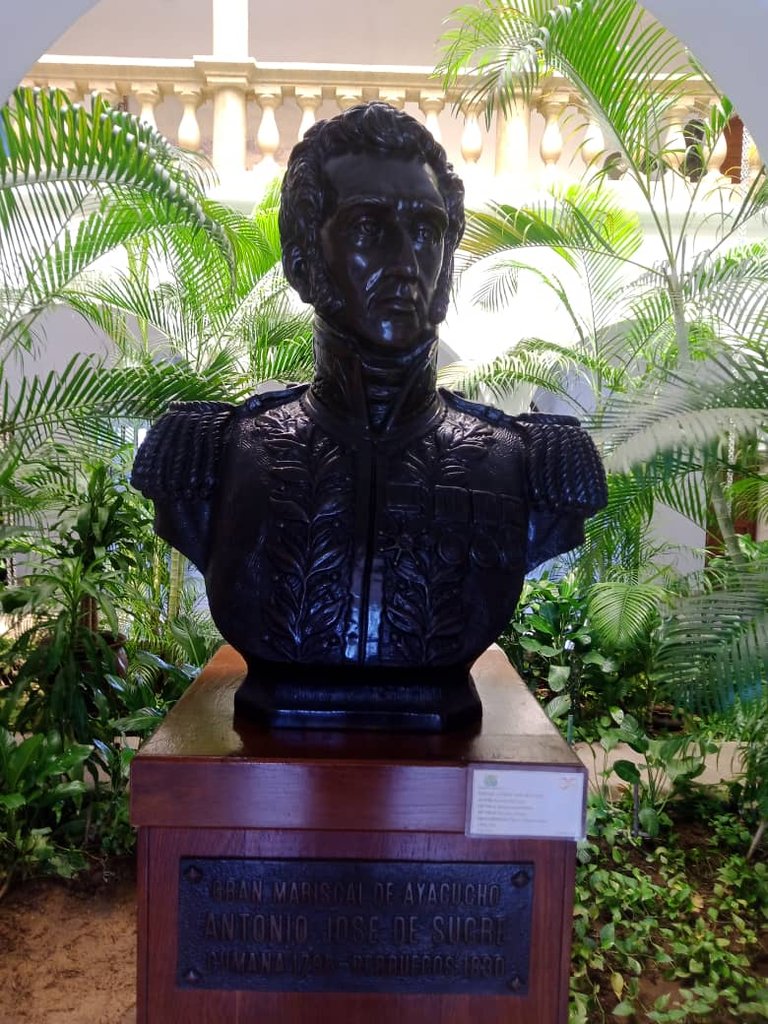
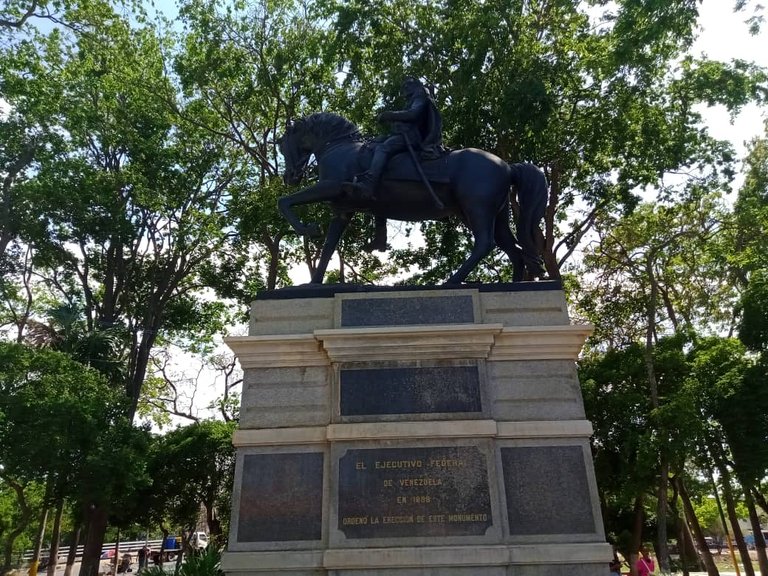

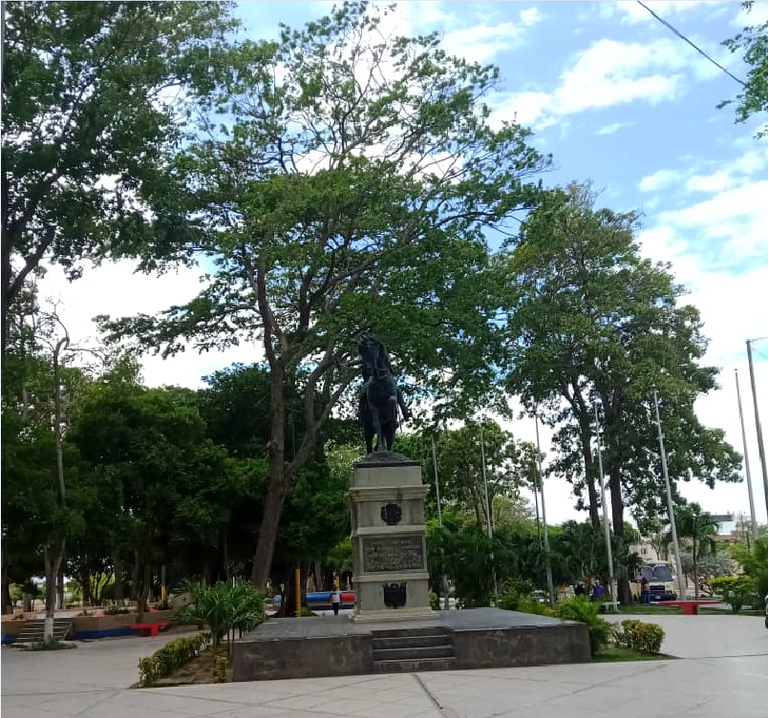
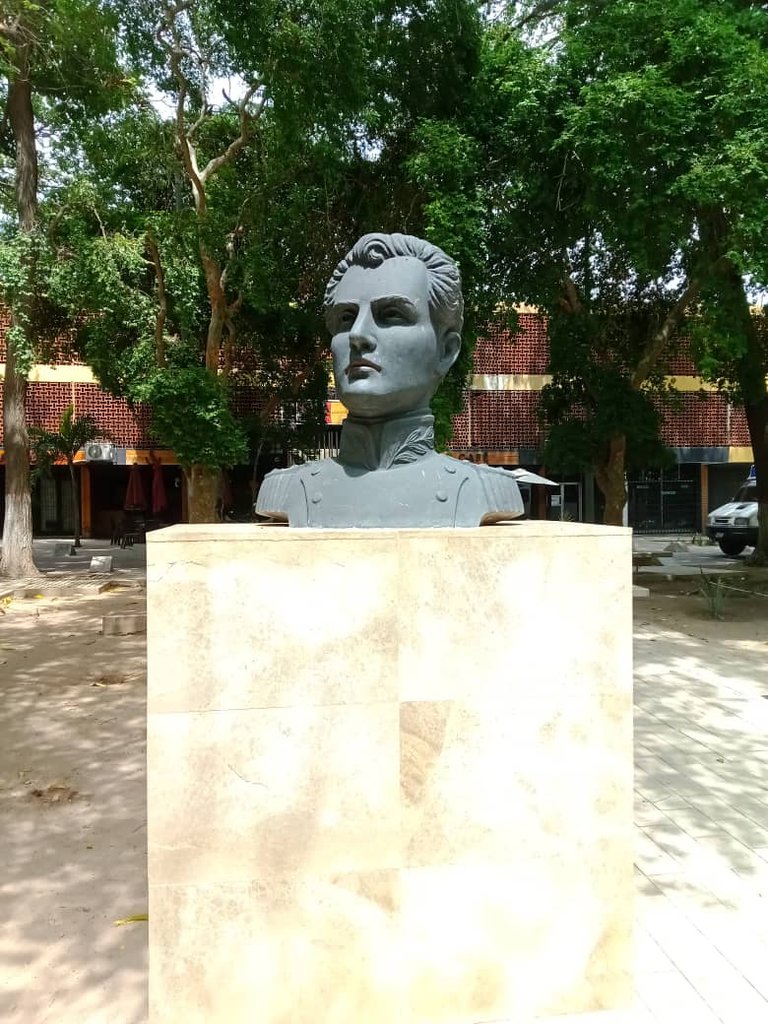
Very close to Ayacucho Park, across Aristiguieta Avenue, is Miranda Square, this stands out for its gold and white fountains and pays tribute to the national hero Francisco de Miranda who participated in the independence of several countries inside and outside the American continent, in front of the fountains is the sculpture of this national hero also known as El Generalísimo, the square in addition to the fountains has concrete benches on the sides and at the ends of the benches are the planters, in the shape of a cube, the floor is granite and the sculpture is located on a marble pedestal, which is black, on the front of the pedestal there is an inscription indicating the date of remodeling that was done to the square and in which this sculpture was added, according to information from those in charge of taking care of the square.
Next to this square is the bust of Francisco de Miranda and in the back is the Manzanares River promenade where many people come to chat, enjoy the breeze and the landscape offered by the river, the bust rests on a metal and concrete base, decorated with ceramic cutouts around the edges, the sculpture is gray and is surrounded by several trees, whose branches when moved by the wind, cover part of Miranda's face, at the bottom there is a bench in the shape of the letter D, from there you can see the benches and walkways on the banks of the Manzanares River, in addition you can appreciate a beautiful view of the bridge over the river.
Muy cerca del parque Ayacucho, al cruzar la avenida Aristiguieta, se encuentra la plaza Miranda, esta destaca por sus fuentes en color dorado y blanco y rinde homenaje al prócer Francisco de Miranda que participó en la independencia de varios países dentro y fuera del continente americano, al frente de las fuentes se ubica la escultura de este prócer también conocido como El Generalísimo, la plaza además de las fuente tiene bancos de concreto en los costados y en los extremos de los bancos se encuentran las jardineras, en forma de cubo, el piso es de granito y la escultura se ubica en un pedestal de mármol, el cual es de color negro, en la parte frontal del pedestal se lee una inscripción que indica la fecha de remodelación que se hizo a la plaza y en la cual se agregó esta escultura, según la información de los encargados de cuidar la plaza.
Al lado de esta plaza se encuentra el busto de Francisco de Miranda y en la parte de atrás se ubica el paseo del río Manzanares, donde muchas personas acuden para conversar, disfrutar la brisa y el paisaje que ofrece el río, el busto reposa en una base de metal y concreto, decorada con recortes de cerámica por los bordes, la escultura es de color gris y está rodeada por varios árboles, cuyas ramas al ser movidas por el viento, cubren parte del rostro de Miranda, en la parte inferior hay un banco en forma de letra D, desde allí se observan los bancos y caminerías en la ribera del río Manzanares, además se aprecia una hermosa vista del puente sobre el río.
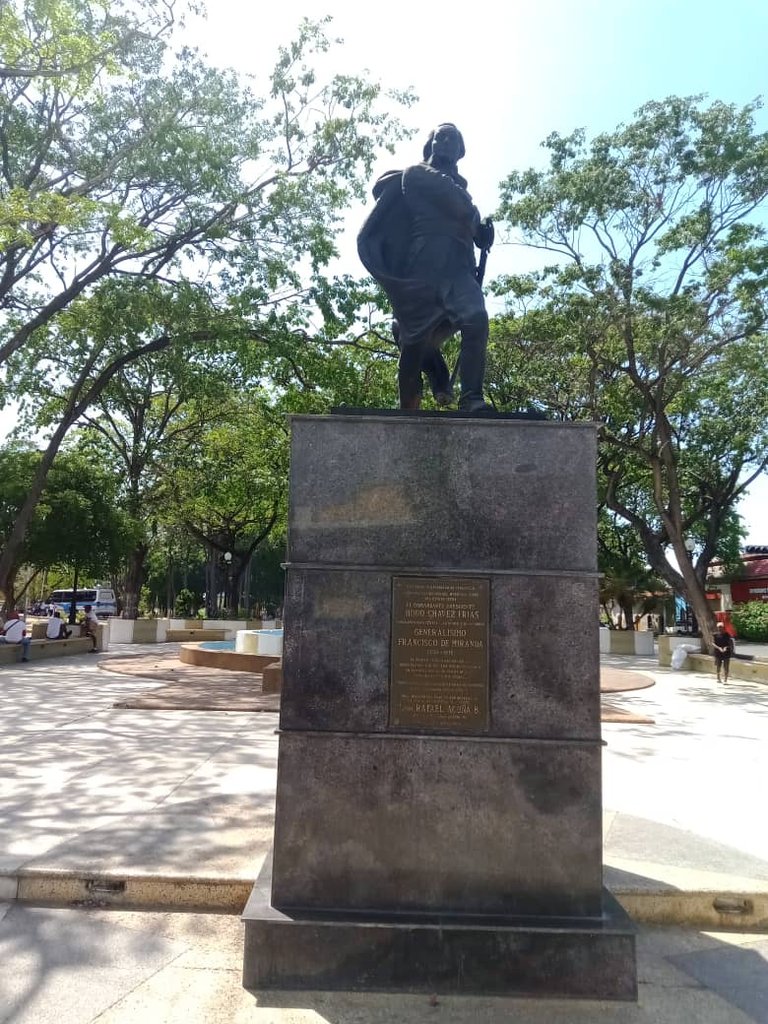
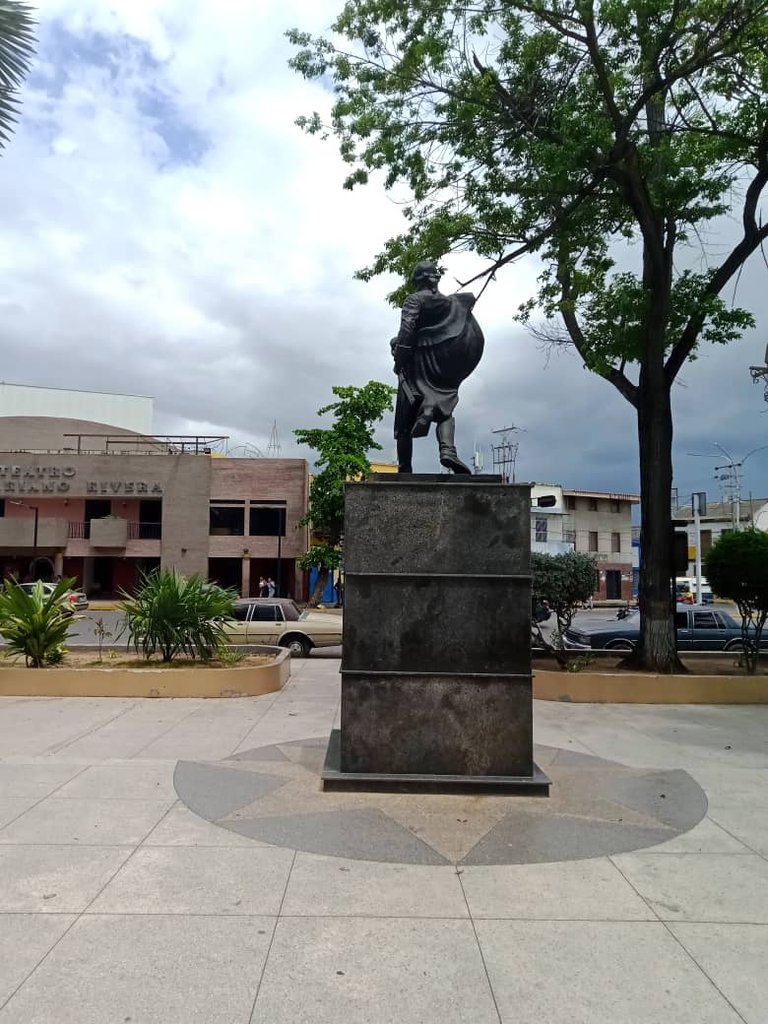
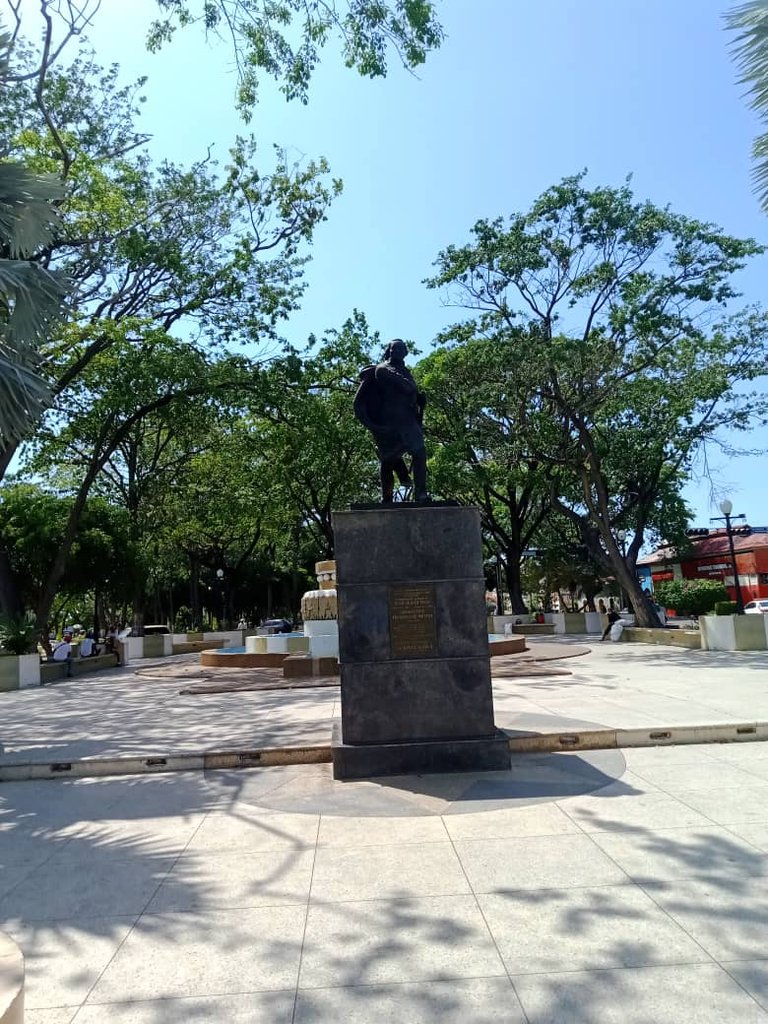
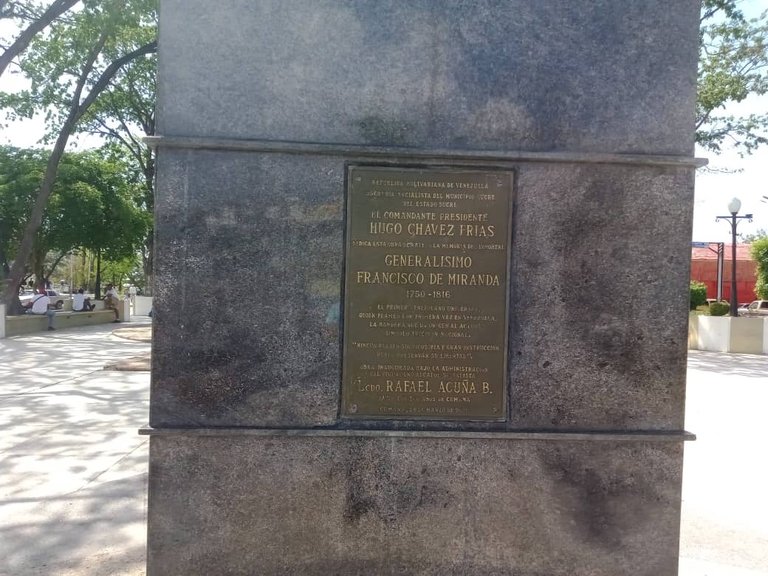
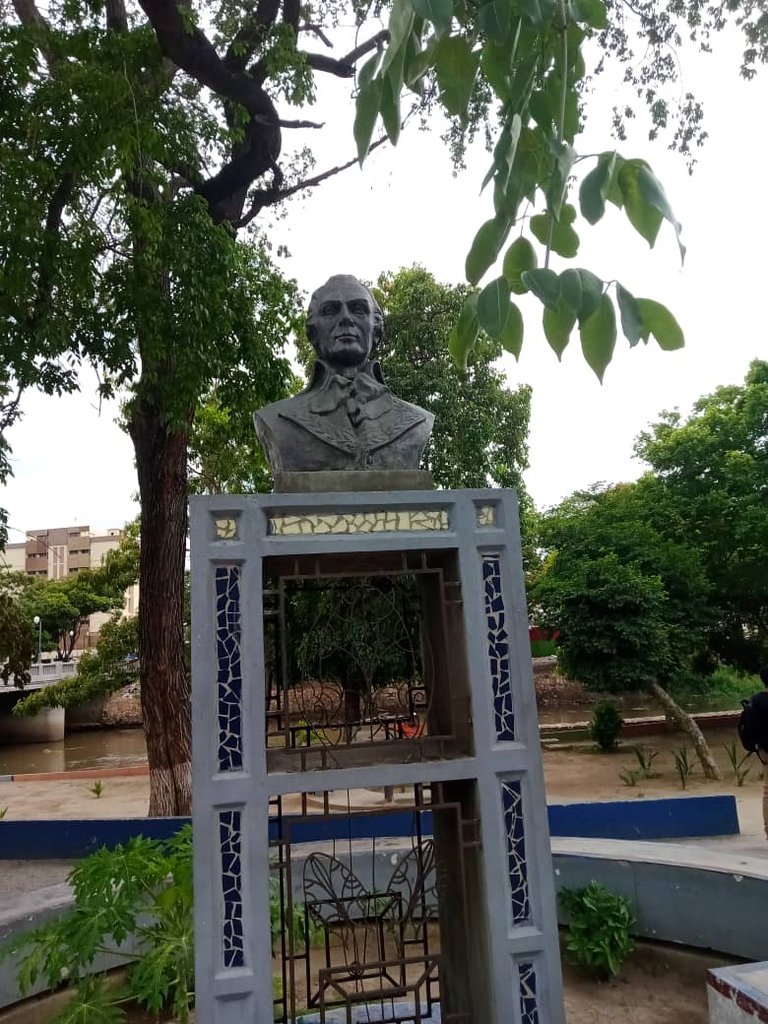
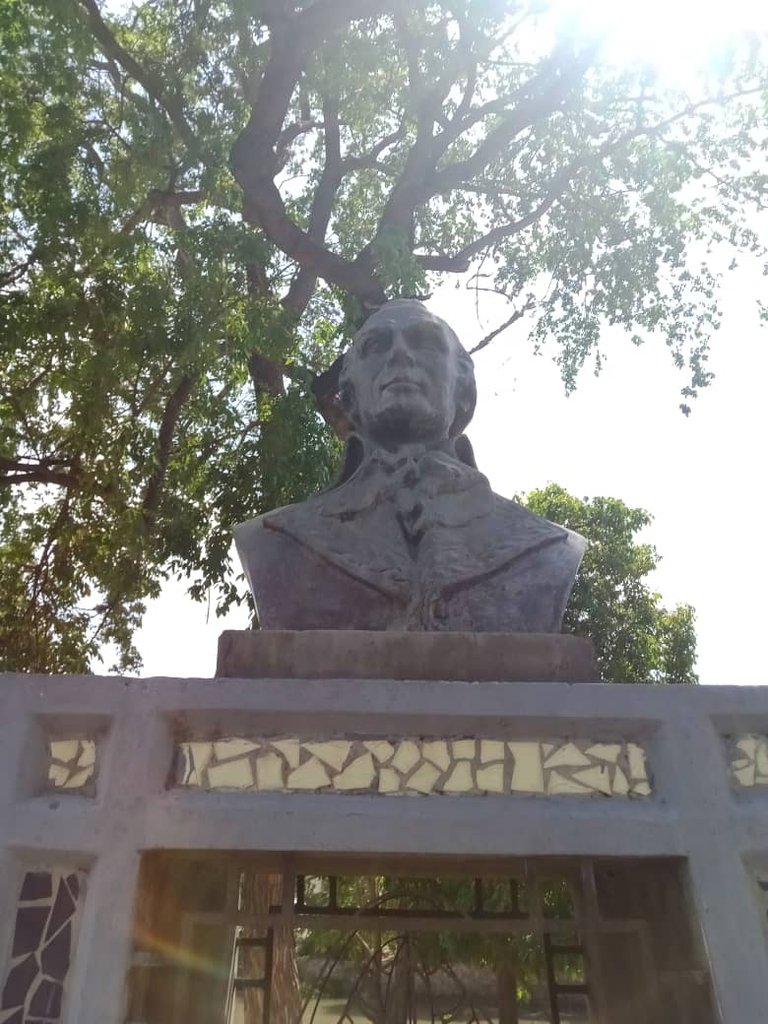
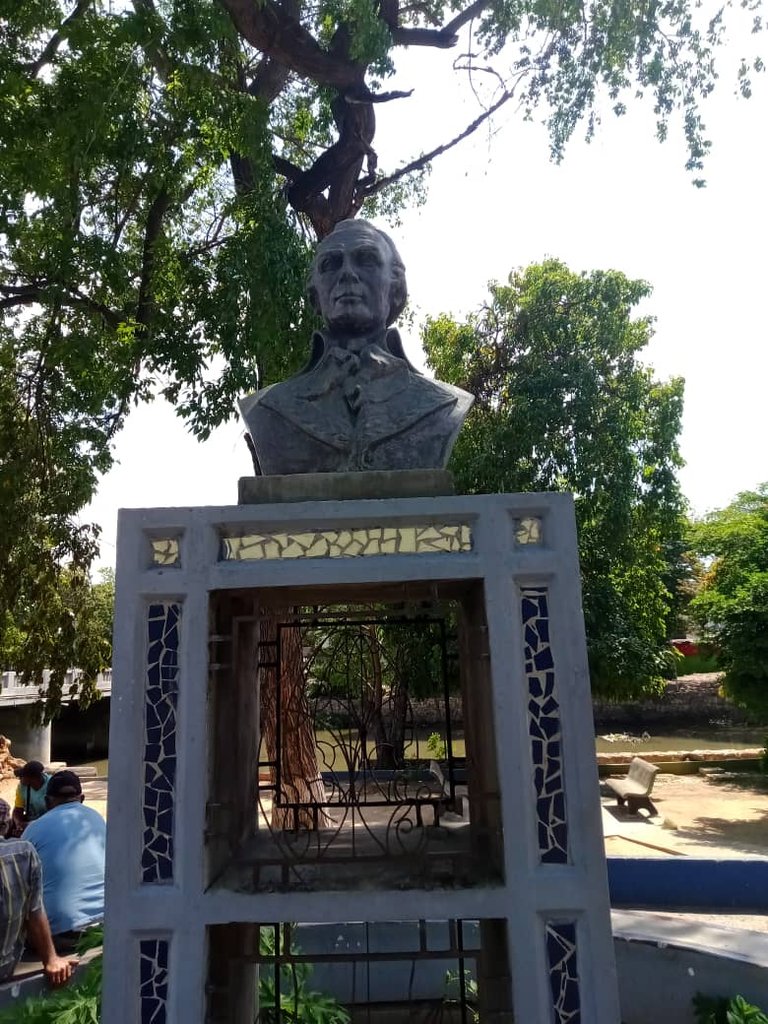
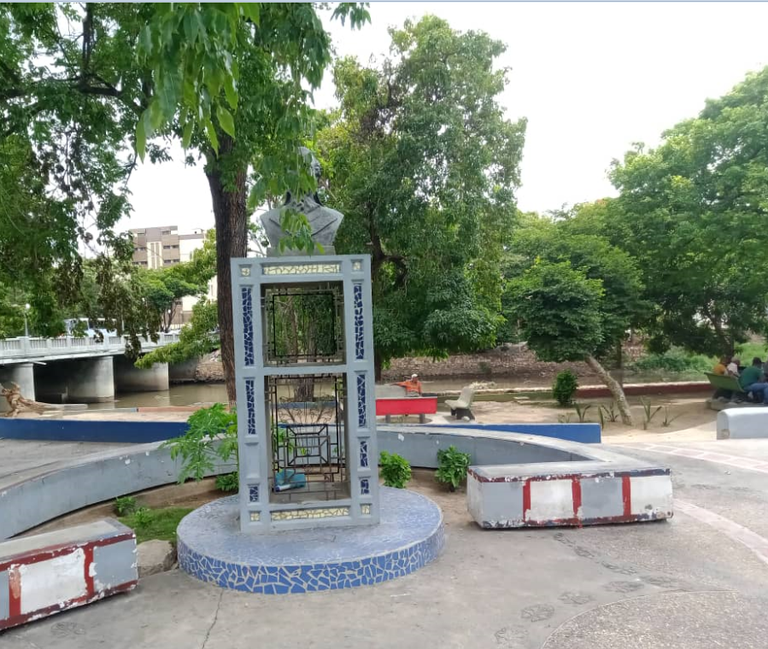
At the front of the square is the Luis Mariano Rivera Theater, a beautiful venue where cultural activities are regularly held. Leaving Plaza Miranda, we head towards the historic center of the city, where, among other institutions and sites of interest, is Plaza Bolívar, which converges with Bolívar, Juncal and Sucre streets. In the center of the square we can see the sculpture of the Liberator of Venezuela, which rests on a vertical pedestal covered with beige granite. In the back are the flagpoles where the flags of the five countries that Bolívar liberated are placed.
The floor is concrete with a rectangular design, the plaza has four walkways that lead to different avenues and historical sites, there are also very large trees and beautiful gardens, the pedestal of the statue has a platform at the base made up of two slabs that go from the small to the large, like the sculpture of Miranda, Bolívar is standing with the sword in his right hand, after taking photos in the plaza, we sat for a while and walked towards Ayacucho Park to wait for the transport.
Another sculpture that caught my attention was one located on the side of the museum, it is a combination of different geometric figures such as semicircles, triangles and rectangles made of metal, joined together, the abstract sculpture is set in a square of white concrete, like the previous sculpture, the next one is also made of metal and represents the typical beret of former President Chávez, in it you can see his eyes and signature, this is located on the banks of the Manzanares River, very close to the bust of Francisco de Miranda, in the background you can see part of the bridge and the walkways on the riverbank; Visiting these squares and learning a little about their history was a nice adventure, which we hope to continue in the coming days. I didn't know that the city had several sculptures by Antonio José de Sucre. This tour allowed us to explore various sectors of the city and see in detail the sculptures that adorn the city and pay tribute to the heroes and the art. At the stop, we took the transport back home, very excited to complete our first tour, visiting the squares of Cumaná.
Al frente de la plaza se encuentra el teatro Luis Mariano Rivera, un hermoso recinto donde regularmente se realizan actividades culturales, al salir de la plaza Miranda, nos dirigimos hacia el centro histórico de la ciudad, en este se ubican entre otras instituciones y sitio de interés, la plaza Bolívar, que converge con las calles Bolívar, Juncal y Sucre, en el centro de la plaza podemos ver la escultura del Libertador de Venezuela, la cual reposa en un pedestal vertical cubierto con granito de color beige, en la parte posterior se ubican las astas donde se colocan las banderas de los cinco países que libertó Bolívar.
El piso es concreto con diseño de rectángulos, la plaza tiene cuatro pasillos que conducen a diferentes avenidas y sitios históricos, además hay árboles muy grandes por cierto y hermosos jardines, el pedestal de la estatua tiene en la base una plataforma constituida por dos losas que van desde la pequeña a la grande, al igual que la escultura de Miranda, Bolívar está de pie con la espada en la mano derecha, luego de tomar fotos en la plaza, nos sentamos un rato y avanzamos hacia el parque Ayacucho para esperar el transporte.
Otra de las esculturas que llamó mi atención fue una ubicada al costado del museo, es la combinación de diferentes figuras geométricas como; semicírculos, triángulos y rectángulos de metal, unidos entre si, la escultura abstracta está enclavada en un cuadrado de concreto, color blanco, al igual que la escultura anterior, la siguiente está elaborada también con metal y representa la típica boina del ex presidente Chávez, en ella se aprecian a sus ojos y la firma, esta se encuentra en la ribera del río Manzanares, muy cerca del busto de Francisco de Miranda, al fondo de ella se puede ver parte del puente y de las caminerías de la ribera del río; visitar estas plazas y conocer un poco de su historia fue una linda aventura, que esperamos continuar en los próximos días, no sabía que la ciudad tenía varias esculturas de Antonio José de Sucre, este recorido nos permitió explorar varios sectores de la ciudad y ver en detalle las esculturas que adornan la ciudad y rinden homenaje a los proceres y el arte, ya en la parada tomamos el transporte de vuelta a casa muy emocionados por cumplir nuestro primer tour, visitando las plazas de Cumaná.
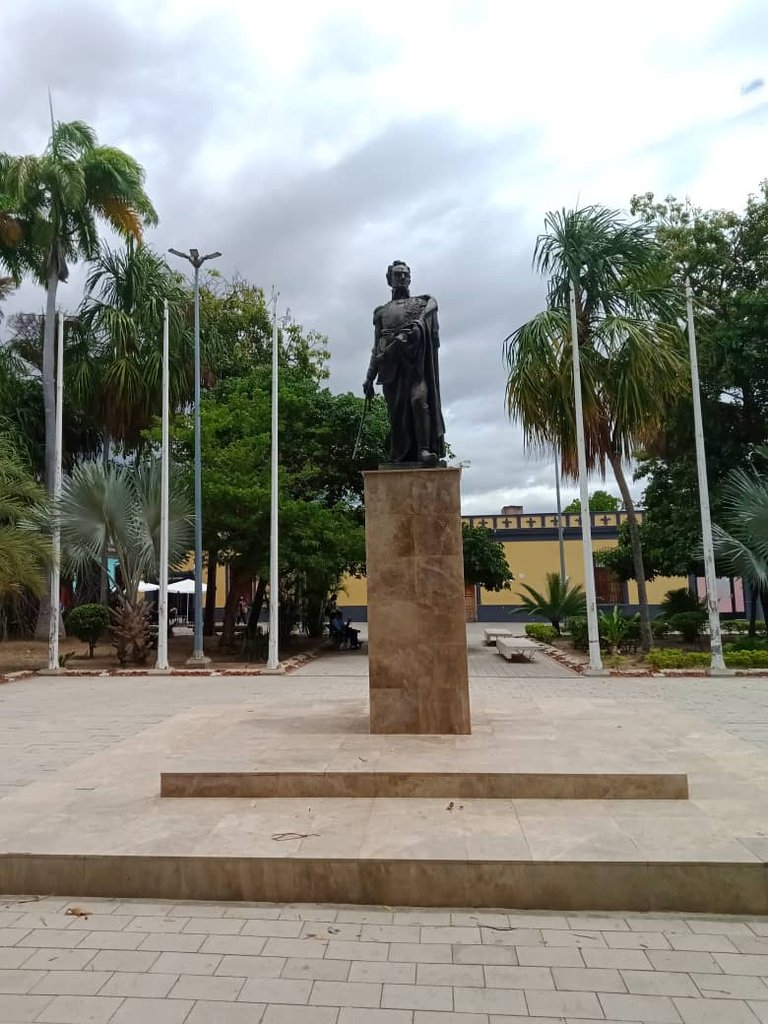
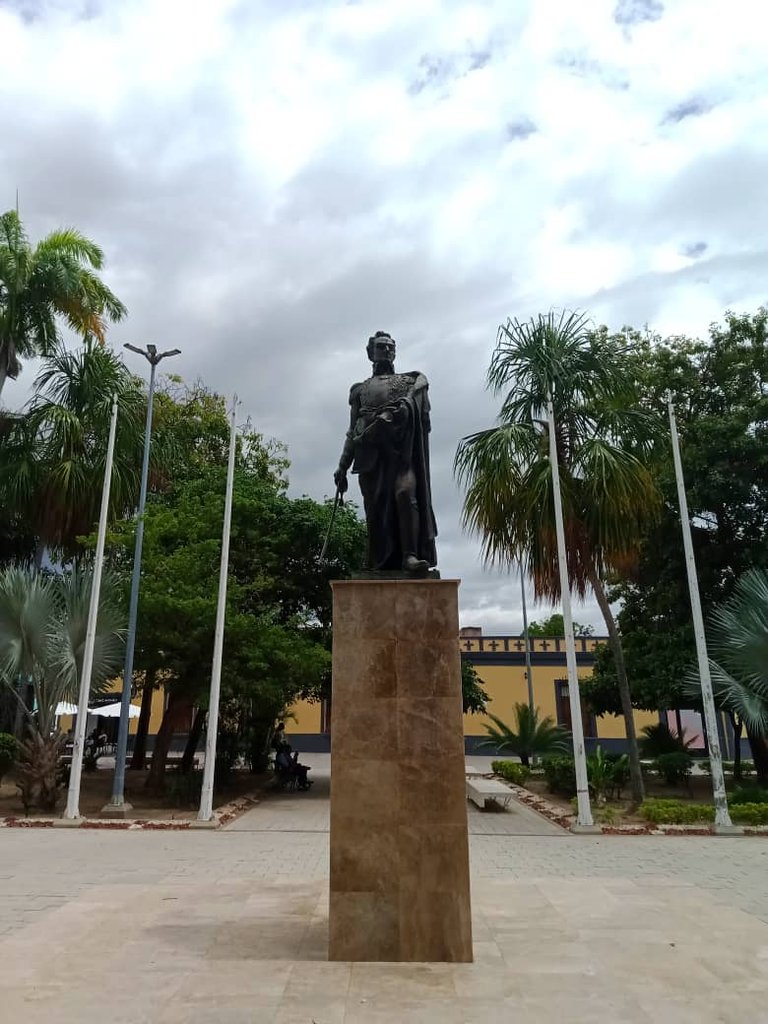
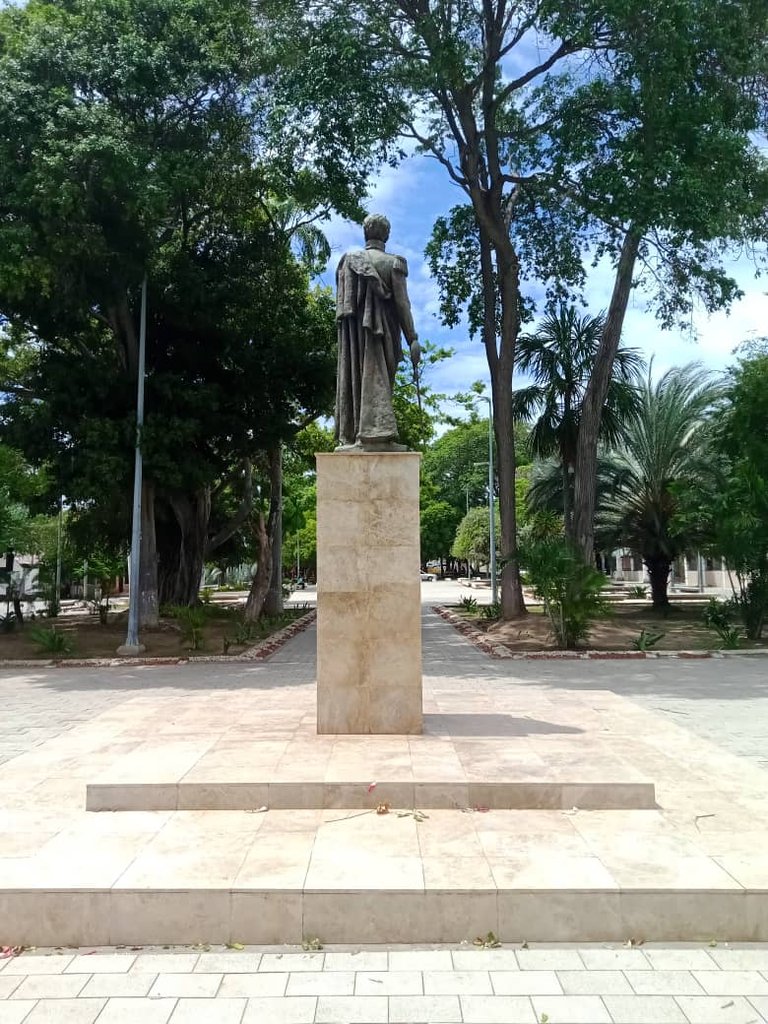
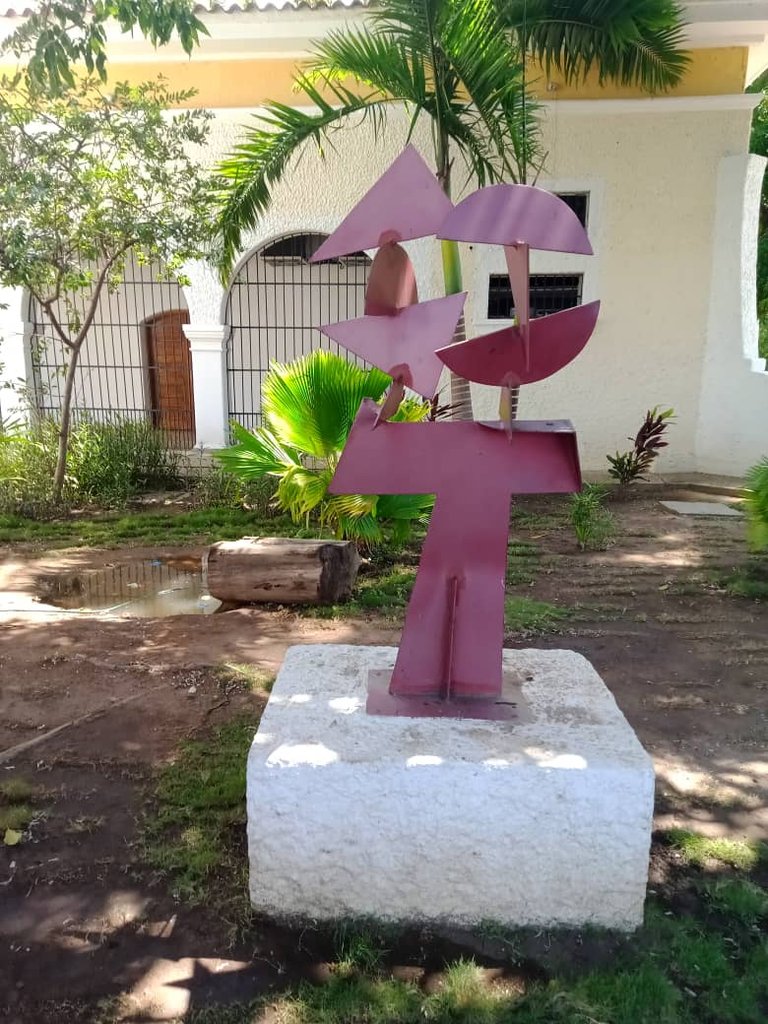
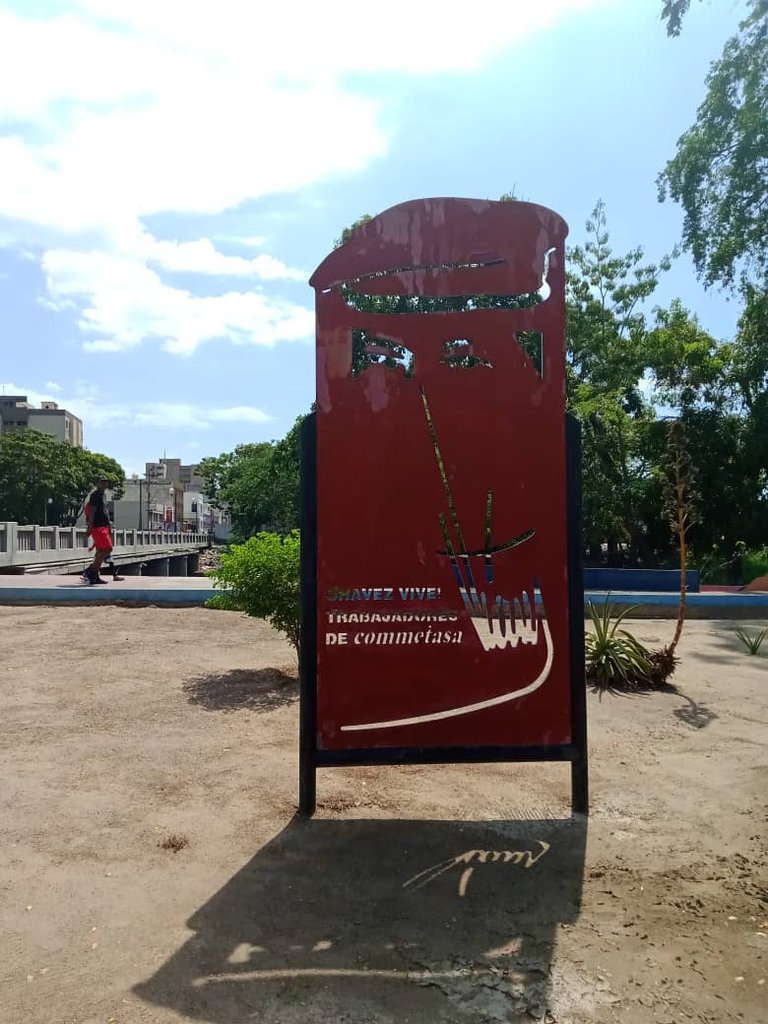
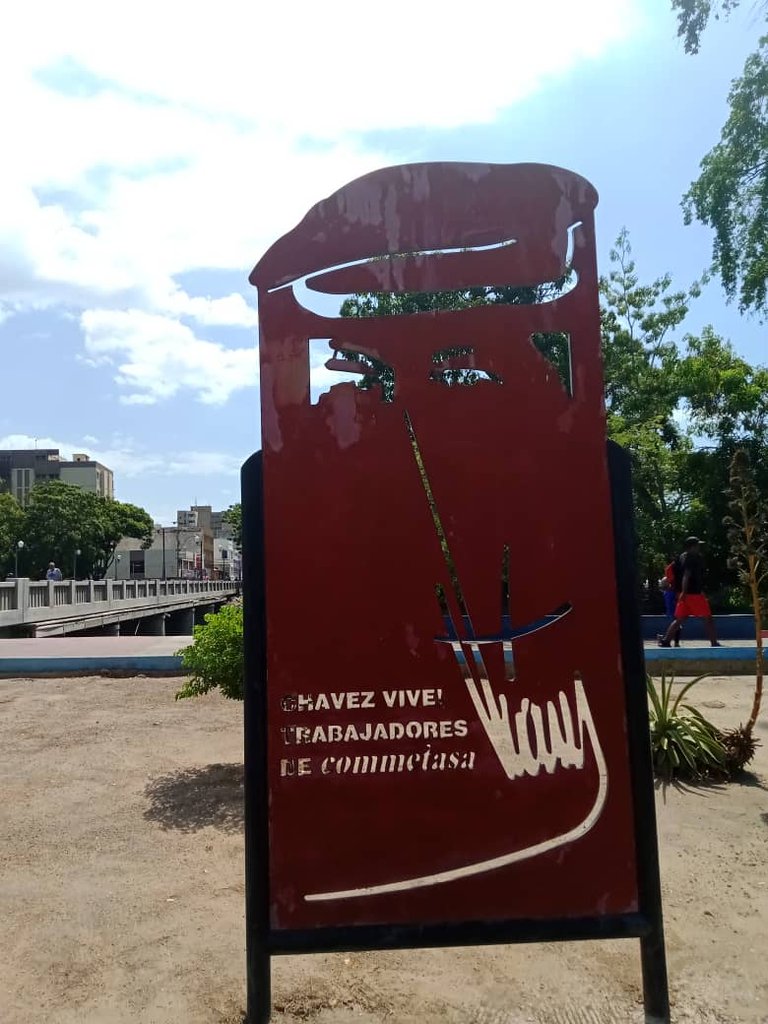
¡Bendiciones!
Blessings!
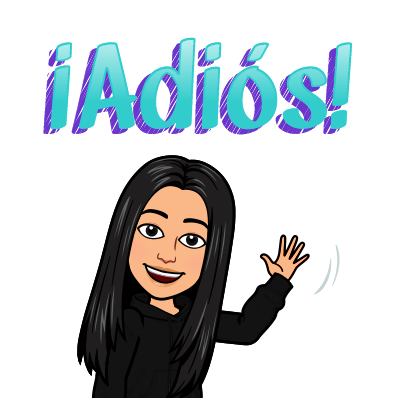
Translated with https://www.deepl.com/translator
All images are my own.
Todas las imágenes son de mi autoría.
You can check out this post and your own profile on the map. Be part of the Worldmappin Community and join our Discord Channel to get in touch with other travelers, ask questions or just be updated on our latest features.
Gracias @worldmappin por fijar el mapa.
Feliz miércoles!
Gracias a vos por usar Worldmappin ❤️
😊❤️🌸
Un paseo que honra la memoria y fortalece los lazos familiares. Qué valioso es aprovechar las vacaciones para redescubrir los espacios que guardan nuestra historia. El museo Gran Mariscal de Ayacucho y el parque contiguo ofrecen momentos de reflexión sobre el legado de nuestros próceres. Gracias por compartir estas imágenes tan cuidadas y tu experiencia con tanto detalle. ❤️
Hola amiga, fue un divertido paseo, que nos permitió conocer lugares intersantes e históricos de la ciudad, las plazas rinden un merecido homenaje a los héroes nacionalesque lucharon por la independencia del país, el museo y el parque Ayacucho son mis favoritos, por su ubicación y vistas de la ciudad. ❤️😊
Feliz miércoles!
Wow, this tour around the city center is truly rich in history and culture 😍 The statues are not only beautiful, but also full of meaning, especially the explanations are so detailed that it feels like you're walking along with them 😁. The photos also make the city feel alive 🌿🏛️
Greetings @agungprasetyo, The city center has several spaces for fun and relaxation, as well as many stories to learn. The plazas and their sculptures are well-deserved tributes to the country's heroes.
Have a great day!
Thank you, @belkyscabrera ! I agree, those plazas really honor the heroes beautifully... I enjoyed seeing the sculptures and the atmosphere there. Wishing you a great day too!
Thank you very much 😊
!discovery 30
Saludos @wilfredocav, agradecida por el apoyo.
Feliz miércoles!
This post was shared and voted inside the discord by the curators team of discovery-it
Join our Community and follow our Curation Trail
Discovery-it is also a Witness, vote for us here
Delegate to us for passive income. Check our 80% fee-back Program
Thank you for the support @discovery-it
Best regards!